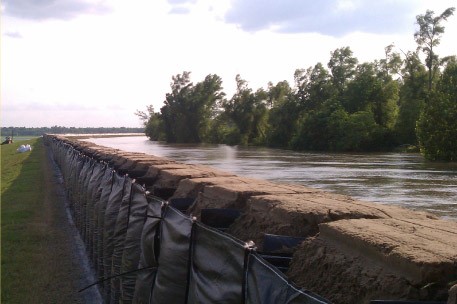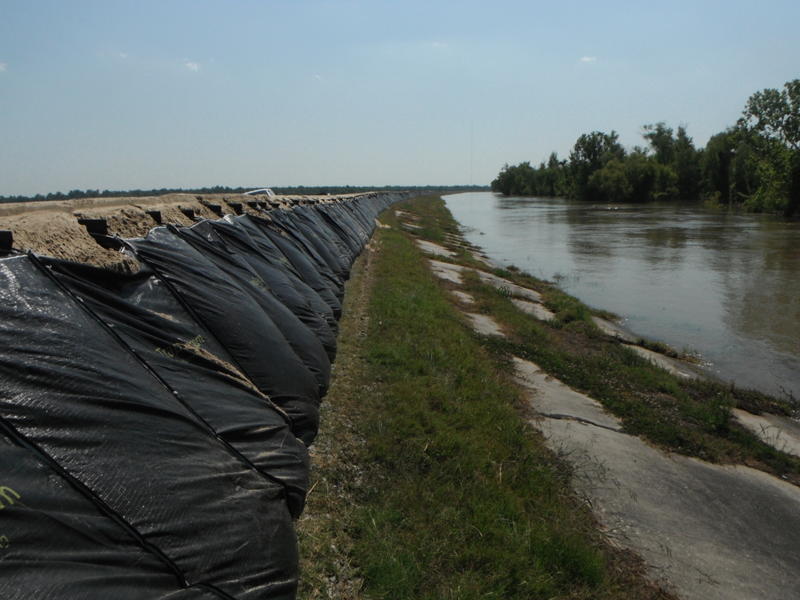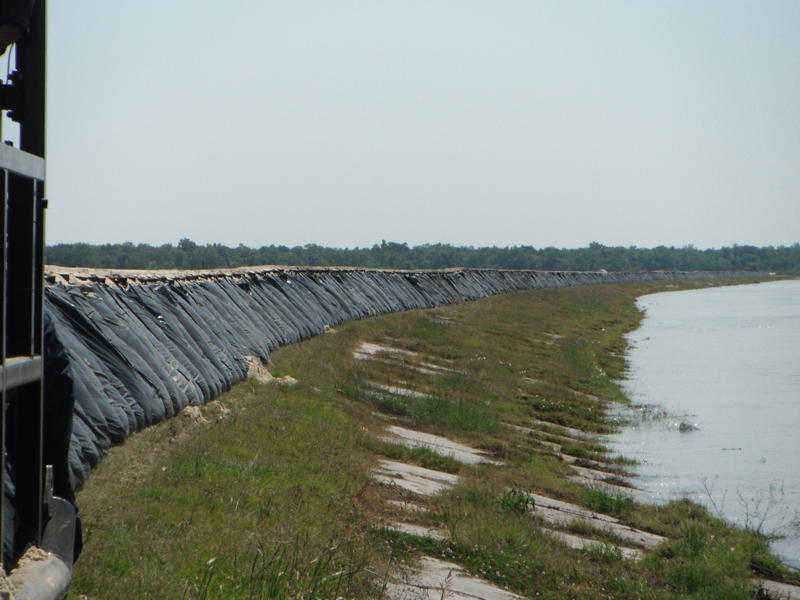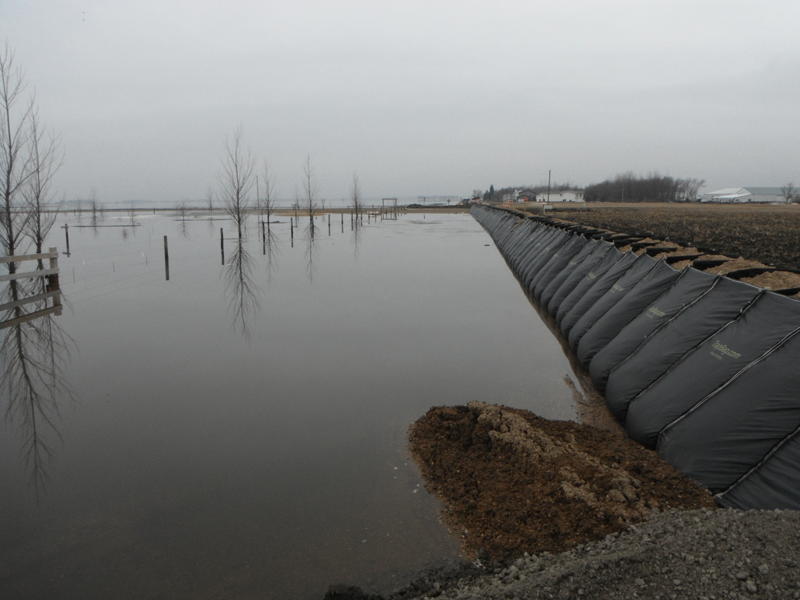Project Specifications
- Product: 4-foot TrapBag barriers strategically placed in two continuous miles along the East Bank Levee
- Fill Material: Locally sourced sand
- Integration: Deployed alongside USACE-engineered levee enhancements
Initial Solution
To protect Baton Rouge from imminent flood damage, TrapBag barriers were deployed as a temporary levee extension.
- Quick Deployment & Minimal Resources: Set up rapidly with fewer personnel and equipment than traditional flood barriers.
- Cost-Effective Protection: Prevented millions in damages, proving highly economical for large-scale urban defense.
- Enhanced Flood Resilience: Provided extra height to the levee, significantly reducing the risk of a breach.
- Integration with USACE Measures: Worked in conjunction with other flood control efforts for comprehensive protection.
Performance During Major Flooding
During the crest of the 2011 Mississippi River flood, the TrapBag levee successfully held back extreme water levels, preventing overtopping and safeguarding two miles of critical infrastructure. Local authorities credited the system with averting a disaster on par with the damage seen in New Orleans during Hurricane Katrina.
- Two Miles of Protection: TrapBags added crucial support to the levee, safeguarding Baton Rouge from overtopping.
- Averting Disaster: The system prevented catastrophic flood damage.
- Positive Community Reception: Local officials and residents commended the swift setup and effectiveness of the TrapBag system.
- Ongoing Recognition: While other products were mentioned, local records and photos highlight the TrapBag system’s pivotal role.
Key Outcomes
- Immediate Defense: Rapid deployment prevented levee overtopping and extensive flood damage.
- Cost-efficiency: TrapBag installation cost was significantly lower than potential repair and recovery expenditures.
- Operational Efficiency: Reduced reliance on large sandbag crews, lowering labor costs and safety risks.
- Enduring Strategy: Continued use in USACE flood plans highlights TrapBag’s lasting impact on emergency flood management
Conclusion
The 2011 deployment of TrapBag barriers by the Pontchartrain Levee District and U.S. Army Corps of Engineers in Baton Rouge demonstrates the power of rapid, scalable, and reliable flood protection under extreme conditions. By swiftly extending levee height over two miles, the project not only averted a catastrophic flood event but also established TrapBag as an essential tool for major flood control initiatives.
Additional Resources & References
- 2011 Mississippi River Flood Report: GEER Association, citing the severe river conditions during which the TrapBag levee was used
- Louisiana DOTD Releases
- Local News Articles: WAFB: Temporary Levees | WWLTV: High River & Storm Surge Concerns
Installation Highlights
- 4-foot TrapBag barriers strategically placed in two continuous miles along the East Bank Levee
- Locally sourced sand
- Deployed alongside USACE-engineered levee enhancements





